Animal movement technologies have already significantly advanced our understanding of the natural world, from uncovering previously mysterious migration patterns and key movement corridors to demonstrating the impacts of anthropogenic pressures and climate change. Continuing advances in the development of technologies for collecting and transmitting bio-logging data, combined with the increased availability of high-resolution environmental data and analytical developments in movement modelling, are opening doors to novel applications. However, there are still major gaps in the space, including mobilizing movement data to translate data from tracking devices into insights for application in policy and practice. This group is a place for the animal movement community to connect and discuss our efforts to advance the field.
Resources for beginners
Learn about WILDLABS Animal Movement research projects
- MoveBON Initiative Announcement
- MoveBON Follow-Up Discussion
- Virtual Meetup Season 4: Tracking Progress (A WILDLABS research project on movement ecology)
Group curators
- @TaliaSpeaker
- | She/her
WILDLABS & World Wide Fund for Nature/ World Wildlife Fund (WWF)
I'm the Executive Manager of WILDLABS at WWF



- 23 Resources
- 64 Discussions
- 31 Groups
- @lhughey
- | she/her
Smithsonian Conservation Biology Institute
I am an ecologist and program manager with experience leading collaborative research projects in international settings. I specialize in the application of animal tracking data to conserve migratory species on a changing planet.



- 6 Resources
- 10 Discussions
- 3 Groups
No showcases have been added to this group yet.
- @RobynneKotze
- | Dr
Conservation Director - Conservation of Natural Ecosystems Trust (CONNECT)
- 0 Resources
- 1 Discussions
- 7 Groups
- @Jeorgiopierre
- | Him he his
Field researcher and systems designer operating a mobile apicultural laboratory focused on the study of terroir-specific variation in bee-derived products. Through Apis Nomadica Labs, I deliver pollination services to regional farms while simultaneously collecting ecological data
- 0 Resources
- 1 Discussions
- 10 Groups
- @tomipiriyev
- | mr
I am maker , passionate in electronics, developer of Loko offline GPS tracker
- 0 Resources
- 6 Discussions
- 6 Groups
Conservation Ecologist established in Belgium working in bio-accoustic and animal GPS sensor
- 0 Resources
- 0 Discussions
- 3 Groups
- @Ilia
- | He/Him/His
I am a PhD Student in Computer Science at Iowa State University. I serve as a computational advisor and Director of Evaluation for the Human-Augmented Analytics Group (HAAG).
- 0 Resources
- 0 Discussions
- 3 Groups
- 0 Resources
- 0 Discussions
- 6 Groups
I created Snappy Mapper to make gathering geospatial data more accessible for everyone.

- 0 Resources
- 5 Discussions
- 12 Groups
- 0 Resources
- 2 Discussions
- 1 Groups
- @Lysa001
- | she/her
Conservation Biologist
- 0 Resources
- 0 Discussions
- 15 Groups
Natural Solutions

- 0 Resources
- 17 Discussions
- 10 Groups
Zoological Society London (ZSL)
- 0 Resources
- 2 Discussions
- 9 Groups
Smithsonian Institution
- 0 Resources
- 0 Discussions
- 13 Groups
This is a NASA funded position that is part of a team creating a Digital Twin for African forests.
15 January 2025
seeking BSc student interested in a Master project involving analysis of a large GPS dataset of houbara movements
15 January 2025
Come along to the first season of Behind the Buzz, where we’ll bring in experts to break down the basics of global conservation policy frameworks through the lens of animal movement and explore how our community can...
7 January 2025
Join the San Diego Zoo Wildlife Alliance as a Postdoctoral Fellow! Lead groundbreaking bioacoustic and ML research to conserve burrowing owls in SoCal.
26 November 2024
The Smithsonian’s National Zoo & Conservation Biology Institute is seeking two Post-doctoral Research Fellows to advance research in the spatial ecology and conservation of bustard species with a special focus on...
11 November 2024
The Marine Innovation Lab for Leading-edge Oceanography develops hardware and software to expand the ocean observing network and for the sustainable management of natural resources. For Fall 2025, we are actively...
6 October 2024
The Connected Conservation is thrilled to announce our award's third round in collaboration with the Airbus Foundation. This award champions the use of cutting-edge satellite imagery to tackle biodiversity loss and...
30 September 2024
Just a quick post because I happened to run into this. Link in the body text
22 August 2024
Join us in celebrating this year’s Judging Panele Award winners!
19 August 2024
Join us in celebrating this year’s Community Choice Award winners!
15 August 2024
Vote for your favorite submissions that best demonstrate conservation impact, novel innovation/discovery, and strong storytelling of the work and the sector.
12 August 2024
To celebrate our 9th Annual #Tech4Wildlife Photo Challenge starting yesterday, we’re taking a look at past and current submissions that feature the fastest growing areas of conservation tech: movement ecology, AI,...
5 August 2024
August 2025
event
September 2025
event
event
October 2025
event
November 2025
event
July 2025
May 2025
event
March 2025
February 2025
event
event
100 Products
Recently updated products
| Description | Activity | Replies | Groups | Updated |
|---|---|---|---|---|
| Hi Wildlabbers, This week's Tech Tutors Season 2 epsiode will see our sixth tutor, Sarah Deans, tackle... |
|
Animal Movement | 4 years 6 months ago | |
| Hi Dennis, I actually work in the graduate career center at my university (my fellowship is doing that rather than teaching) and this is what we specialize in! I too am a... |
|
Animal Movement | 4 years 7 months ago | |
| Hi all you Wild folk! I'd like to ask if anyone has used CVEDIA's ARTEMIS or WildEyes AI before for recognising animals along... |
|
Animal Movement | 4 years 7 months ago | |
| Thanks Ellie - I signed up : ) |
|
Animal Movement | 4 years 9 months ago | |
| Thanks Thomas. The option of desertstar seems strong, and it needs to be strong for the animals I work with (large carnivores). Indeed the pod would need to be designed to fit the... |
+19
|
Animal Movement | 4 years 10 months ago | |
| Hi all, Firstly, I'd just like to say a big thank you to everyone who attended my Tech Tutors presentation last month. And secondly, thank you for your patience in allowing... |
|
Animal Movement, Drones | 4 years 11 months ago | |
| Hi Ellie, thanks for your interest. So I have two possible explanations why the camera traps I used did not release, even though I found otter droppings directly in front of my... |
|
AI for Conservation, Animal Movement | 4 years 11 months ago | |
| Hi @aponzo Take a look at the Woods Hole Group newsletter this month. They are giving away some Developer Kits - https://mailchi.mp/1e130f609ed2/august2020?fbclid=... |
+13
|
Animal Movement | 4 years 11 months ago | |
| Hi Everyone, I'm Anthony Lindley, a PhD candidate at the University of Southampton. I mainly work with computer vision but would like to branch out and try other ML... |
|
Animal Movement | 5 years ago | |
| Hi everyone, The Int Biologging Society asked us to share this call, passing along in case anyone can participate: ... |
|
Animal Movement | 5 years ago | |
| Hi all, Starlink is Ku and Ka-band as they are targetting broadband, so you're looking at similar large(ish) transmit / receive dishes as traditonal VSAT, and they will POE... |
|
Animal Movement | 5 years ago | |
| I would like to introduce the Terrapin Tracker project: https://conservationx.com/project/key/terrapintracker This project was recently... |
|
Animal Movement | 5 years ago |
Technology in Wildlife Welfare Workshop (in-person, UK)
6 May 2025 7:46pm
Post-Doctoral Research Fellow/ Project Manager, University of St. Andrews, UK
2 May 2025 4:31pm
Detecting animals' heading and body orientation
2 April 2025 10:53am
25 April 2025 10:50am
Hi Peter, Just tell me exactly what you are looking for. I have commissioned these collars from the engineer who originally made my Virtual Fence back in 2016 (still working). The aim is to have a long life while also taking regular readings (5 - 10min) so that animals cannot invade croplands or villages without being detected before they can be do any damage. We have tried to include all possible features that will be useful, while still maintaining low weight and simplicity. Hence no solar and external antennae outside the housing.
Cheers, Phil
1 May 2025 8:50am
Thanks Phil - I have e-mailed you.
Peter
CMS Survey on Ecological Connectivity and Infrastructure
30 April 2025 10:03pm
Connecting the Dots: Integrating Animal Movement Data into Global Conservation Frameworks
 Lacey Hughey
and 3 more
Lacey Hughey
and 3 more
30 April 2025 1:38am
Expert feedback wanted: Energy Harvesting
13 March 2025 12:40pm
11 April 2025 10:57am
Hi, we've gotten more than 20 replies until now so thank you if you took the time to answer.
And we would really appreciate if you could spare a few minutes to answer if you haven't by now!
Thank you,
David, Kinect team
non-invasive technique to apply GPS collars without catching?
14 June 2021 12:01pm
13 April 2024 11:48am
Might very well be so! I highly encourage you to take up the challenge!
26 November 2024 11:34pm
In case anyone missed it, the latest from the burr on fur work!
Telemetry without collars: performance of fur- and ear-mounted satellite tags for evaluating the movement and behaviour of polar bears | Animal Biotelemetry | Full Text
The study of animal movement provides insights into underlying ecological processes and informs analyses of behaviour and resource use, which have implications for species management and conservation. The tools used to study animal movement have evolved over the past decades, allowing for data collection from a variety of species, including those living in remote environments. Satellite-linked radio and GPS collars have been used to study polar bear (Ursus maritimus) ecology and movements throughout the circumpolar Arctic for over 50 years. However, due to morphology and growth constraints, only adult female polar bears can be reliably collared. Collars have proven to be safe, but there has been opposition to their use, resulting in a deficiency in data across much of the species’ range. To bolster knowledge of movement characteristics and behaviours for polar bears other than adult females, while also providing an alternative to collars, we tested the use of fur- and ear-mounted telemetry tags that can be affixed to polar bears of any sex and age. We tested three fur tag designs (SeaTrkr, tribrush and pentagon tags), which we affixed to 15 adult and 1 subadult male polar bears along the coast of Hudson Bay during August–September 2021–2022. Fur tags were compared with ear tags deployed on 42 subadult and adult male polar bears captured on the coast or the sea ice between 2016 and 2022. We used data from the tags to quantify the amount of time subadult and adult males spent resting versus traveling while on land. Our results show the three fur tag designs remained functional for shorter mean durations (SeaTrkr = 58 days; tribrush = 47 days; pentagon = 22 days) than ear tags (121 days), but positional error estimates were comparable among the Argos-equipped tags. The GPS/Iridium-equipped SeaTrkr fur tags provided higher resolution and more frequent location data. Combined, the tags provided sufficient data to model different behavioural states. Furthermore, as hypothesized, subadult and adult male polar bears spent the majority of their time resting while on land, increasing time spent traveling as temperatures cooled. Fur tags show promise as a short-term means of collecting movement data from free-ranging polar bears.
28 March 2025 10:15am
Reopenning this discussion again in case there is some news!
Mole-Rat Mystery. Can anyone help?
19 March 2025 3:25pm
20 March 2025 4:17pm
Hi Sean! I love that you are naturally curious and are pursuing really cool projects in your free time. I know absolutely nothing about cape dune mole rats (in fact, never heard of them prior to this post, but I will confess I was interested in the concept of a mole-rat mystery), but I did have some thoughts about where you might find more information-
It seems like the types of questions you are asking are pretty specific and niche. My first thought on how to find someone with expertise in these specific rodents was to go to their iNat page- there you can see the top observer and top identifier. Both individuals are active researchers, so I think reaching out to them on iNat or finding their e-mails from their respective organizations' sites might be a good way to get in touch.
I also did a quick search in Google Scholar in which I typed in only the scientific name and hit go. The two publications linked above caught my eye as potentially helpful in your search- particularly the first one. They excavated burrows and noted things like home range size, that males have more burrows than females, etc. I didn't go much beyond the abstracts but these seem like they might get you on the right tracks!
Happy ratting!
25 March 2025 8:36am
Good morning Vance
Thank you very much! I am looking into some papers that I was kindly directed to by Jocelyn Stalker ( her comment below) and am looking for ways to establish population dynamics just by looking at the mounds. Once I have figured this part out I should be able to correlate the information to the drone data. The Ground Sampling Distance (GSD) for this project is very small, 1.3cm per pixel. This has proven to be very useful because I am able to use the very fine 3D models to run change detections that pick up new heaps and vegetation reductions (which may be due to feeding) on a weekly basis. It helps not only visualise but also quantify where the most activity has occurred. I will keep you posted!
25 March 2025 8:47am
Good morning Jocelyn
Thank you very much for your comment, this is proving to be very useful advice and thank you so much for setting me on the right path!! This is very exciting!!
They are the most extra ordinary little creatures and as I don't know much about them either, I thought I'd try learn as much as I can (not just through literature, but through my own observations as well). I walk past these mounds daily and am always intrigued when I see more mounds and really enjoy watching them actively push the dune sand up to the surface (you don't see the wee fellas but you can watch the sand move as they burrow away). One afternoon while flying my drone (I was quantifying the changes in sediment deposition and erosion volumes in the estuary after a flood that was soon followed by a super high tide), I had a heap between my legs and all of a sardine it starts moving! So that sparked my curiosity even further.
I will keep you posted on my findings and thank you again for the papers and the direction! It is greatly appreciated!!
Drone for Studying Migratory Birds - Research Input
9 October 2024 4:55pm
18 February 2025 10:42pm
Hi! I would be interested to learn more about your project. Would you send me your contact email? Mine is melisa.simic@nuveen.com - We are infrastructure investors globally working with both clean energy and diversified infra assets.
Thanks, Melisa
24 February 2025 4:24am
Hi Melisa,
I have emailed you the project idea. Hope to hear from you soon. My email address is: Geometry Dash Lite jonathonreese0924@gmail.com
21 March 2025 3:25pm
Hi Nikita,
If you haven't already, I'd recommend reaching out to the folks at the Cornell Ornithology lab. They're really glued into all things bird. In particular, I remember seeing a presentation years ago about their project birdcasting, which was measuring bird migration via radar. One of their next steps was to connect small scale behavior to large scale movement data, and it sounds like your drone project could help fill that gap.
Cheers,
Brandon
Subject: “Baa-bridge” – AI Sheep Stress Reduction, Seeking Genius Input!
20 February 2025 9:55pm
21 March 2025 12:18pm
I'm sure others here can comment better than I on models for classifying animal sounds, but from an ML pint of view, a key concern is getting enough data. 10 recordings does not sound like a lot (although how long are they?) and 1000 epochs does sound like a lot. It is very possible that your model is just learning to memorize the inputs, and that it will generalise poorly.
IgotU
29 February 2024 2:12pm
19 April 2024 12:27pm
I'll find you some. Just organising all of our stock of these.
15 March 2025 4:22pm
Hi Nigel
I am interested! I am using it on free-ranging dogs and need units ASAP. It would be nice to have 120B or the version you're working on. A friend is in the US now and he could bring them to me in Brazil.
Thank you!
18 March 2025 9:48am
Hi Natalie,
Will you be able to recatch the animals or do you need remote download? How many loggers are you after?
Thanks
Nigel
GPS tacking tag for turtle doves - any recommendations?
11 August 2021 11:00pm
13 October 2021 6:13pm
Hi all! Just wanted to add in that @gracieermi and I maintain a conservation tech directory that includes all the tracking/telemetry companies we've come across so far - conservationtech.directory.
Currently listed doing a search of the directory -
Cellular Tracking Technologies - https://celltracktech.com/
Advanced Telemetry Systems (ATS) - https://atstrack.com/index.html
Ecotone Telemetry - http://www.ecotone-telemetry.com/index.php/en/oferta/obroze-telemetryczne
GPS Collars - https://www.gps-collars.com/
Lotek - https://www.lotek.com/
Microwave Telemetry - https://www.microwavetelemetry.com/
Milsar - https://milsar.com/
Technosmart Europe - https://www.technosmart.eu/
Telemetry Solutions - https://www.telemetrysolutions.com/
Telenax - https://telenax.com/
Telonics - https://www.telonics.com/index.php
Tigrinus - https://www.tigrinus.com.br/
Titley Scientific - https://www.titley-scientific.com/us/products/wildlife-tracking
Wildlife Computers - https://wildlifecomputers.com/
Xerius Tracking - http://www.xeriustracking.fr/
North Star - http://www.northstarst.com/
Migrate Tech - http://www.migratetech.co.uk/
e-obs GmbH - https://e-obs.de/
Africa Wildlife Tracking - https://awt.co.za/
Holohil - https://www.holohil.com/
Wildlife Materials - https://wildlifematerials.com/
Vectronic Aerospace/Vectronics - https://www.vectronic-aerospace.com/
Kiwi Track - https://kiwitrack.weebly.com/
6 January 2023 8:32pm
The solution with an ICARUS antenna on the ISS is on hold. It is planned that the GRACE-I will be the new satellite system to support the ICARUS:
GRACE-I is planned to be launched in 2027.
This mentions possible intermittent solutions:
How Icarus uses the ISS to collect animal data on Earth | Popular Science
A Max Planck Society-led project called Icarus will beam animal sensor data on Earth to a computer in space.
I am a bit puzzled there is no mentioning of GRACE-I on ICARUS' own website:
Homepage - Animal Sensors Website
Icarus uses satellite and miniature transmitter techniques to track animals around the globe. It will not only enable scientists to monitor animal migration, but also to gain more knowledge about the state of our planet.
14 March 2025 3:07am
Hello
I’m planning to buy new device for turtle dove to study migration patterns in middle east
So i need your help for the best device for this research
Thanks
New Argos Constellation
24 June 2024 4:12pm
11 March 2025 9:58pm
Hello Yvan, I work for Cellular Tracking Technologies now and out of the loop a little bit about CLS' activities. With that said, my suspicion is Summer(ish) 2025. (Maybe someone on the User Services team has better insight.)
12 March 2025 12:38pm
Oh, I hadn't noticed your new affiliation. I'll try to reach out to someone at Woods Hole Group-CLS.
13 March 2025 2:50pm
No worries Yvan - userservices @ woodsholegroup (dotcom)
DIY using SDR connected to a smartphone as a radio telemetry receiver
2 October 2024 5:53am
3 March 2025 2:03am
I'm also interested! I've been prepping to use andorids connected to rtl-sdr's and antennas to monitor animals in stationary roosts, but a Raspberry pi would be better as they can save battery life by only turning on ocassionally, and potentially recording the pulse rate of the VHR signal.
12 March 2025 5:00am
@RobinRowland Your project sounds really interesting too! could you share more?
12 March 2025 5:30pm
Hallo. Maybe this software can help you? It is also executable on RPi. I used it some time ago for the same reason and it worked well. Greetings Karl
OpenWebRX web-based software defined radio | Homepage
OpenWebRX web-based software defined radio receiver, remote HF spectrum monitoring with a wide variety of demodulators.
GPS collars for domestic dogs
20 January 2025 3:26am
20 February 2025 8:46pm
What are your parameters? Do you need yes no movement, which could be collected with an accelerometer and no lat-long data?
Movement on an XY grid once an hour within a tightly bounded area?
High resolution once per second data? Large geographic area?
Different technologies deliver ddifferent datasets. Sometimes, significantly!
10 March 2025 11:37am
Hi Stephanie, at https://Savannahtracking.com we develop and manufacture a variety of collars with sizes ranging from about 95 grams for Raptors, 200grams - 1200g for mammals, and collars for large mammals such as Elephants. We currently have collars deployed on Dingoes which are about the same size as domestic dogs, and I believe that a similar solution will be perfect for your needs.
Our GPS collars can be programmed to collect high resolution data (15-minute gps positions) with hourly uploads via iridium satellite to our server where you can view and download the data from our dedicated windows or MAC SDM platforms. We also have a view only android/ios app. All our collars have two-way satellite communication, Internet based downloading via the free accompanying Savannah Tracking data manager software, automated Google Earth links for visualization, fully user definable geo fencing allowing for point, line and polygon fences and automated app and mail alarms in case of zone violation.
Kindly reach out to us and we can discuss a bespoke solution for your tracking needs at info@savannahtracking.com
11 March 2025 3:31am
Thank you! I will follow up by email.
Animal Movement Across Scales
5 March 2025 10:15pm
WILDLABS Conservation Tech Meetup, DC
3 March 2025 8:55pm
7 March 2025 7:54pm
7 March 2025 8:40pm
23 March 2025 12:58am
GPS Tracker For Wildlife
27 February 2025 12:13pm
2 March 2025 11:34am
Thank you for this valuable information!
Some of the features you mentioned can be quickly added to Loko, while others require more consideration. Loko’s communication is one-way—meaning the transmitter doesn’t know whether the receiver has received the data. This design choice is made to conserve battery life. However, all data is logged internally and can be accessed via USB.
I will add GeoTIFF loading to the Loko App. Currently, Loko is not suitable for wildlife tracking because it is not waterproof, but I am working on improving its mechanical design.
Loko already supports multiple connections, allowing many transmitters to connect to a single receiver or/and multiple receivers.
Regarding encryption: What do you mean by "Encryption should not be optional"?
Are you suggesting that communication should always be encrypted by default? on loko I made it user-configurable because encrypted data packets are 32 bytes, whereas unencrypted ones are 18 bytes. A smaller data packet improves reception sensitivity and extends the transmission range.
In your opinion, what would be a reasonable price for such a device? This is very important when adding new hardware features.
Cheers,
Akio)
2 March 2025 11:42am
Hi Herhanu , appreciate for your valuable feedbacks.
- can you explain what type of release mechanisim do you mean , picture will be much helpfull . do you mean with a remote release mechanisim activates and release the tracker from crocodile collar?
- how far data need to be sent ? with a mesh network of Loko receivers wide range of area can be covered i guess.
- long distance transmission is very challanging when transmitter is very close the ground , on crocodiles especially.
for what purpose do would you use accelerometer data? is there any specific use case?
Cheers, )
2 March 2025 11:55pm
Sure, Akio! Happy to answer!
1. Yes, something like that. The few existing i guess applied already for GPS collar (literally collar) that usually for big cats and some other big mammals. There is also GPS tag for Cetaceans that can pop up, but its only remained with the animals several days CMIIW (eg see links below)
link 1
2. I guess it depends on your research questions or project objectives. But for crocodile they can have vast home range from 100 ha to 10,000 ha (depends on species). For my species, it at least uses 500 ha of area, and the farthest between points can be 15km apart.
3. accelerometer, especially in crocodile can give insight about their movement ability. As they can random as they can be - or being a statue for hours (like when you look at crocs in the zoo). Of course this would depends on your objectives.
Hope this helps!
Cheers~
Building flexible antennas for telemetry radio
10 October 2024 5:59am
21 October 2024 3:01pm
This is very cool Chittakon! I have about approximately 1000 measuring tapes lying around in my garage that would be perfect for this (and if I happen to have to measure something in the field I can!)! An no more fighting my way through the bush with solid Yagis!!
Cheers,
Rob
2 March 2025 9:07am
This is great, I am looking at making a 173mhz flexible aerial and was wondering whether you have the spec needed for this at all?
Thanks!
2 March 2025 10:29am
I would simply scale the dimensions (150/173=0,87) making the antenna smaller, but keep the feeding (1cm, 9 turns, etc) the same.
The 100KB Challenge!
7 February 2025 11:47am
20 February 2025 9:13am
Nice one - what kind of thing would you use this for?
~500mA peak current, it has a similar power profile as the current RockBLOCK product, in that it needs lots of juice for a for a small period of time (to undertake the transmission) we include onboard circuitry to help smooth this over. I'll be able to share more details on this once the product is officially launched!
20 February 2025 9:13am
~500mA peak current, it has a similar power profile as the current RockBLOCK product, in that it needs lots of juice for a for a small period of time (to undertake the transmission) we include onboard circuitry to help smooth this over. I'll be able to share more details on this once the product is officially launched!
20 February 2025 9:31am
Hi Dan,
Not right now but I can envision many uses. A key problem in RS is data streams for validation and training of ML models, its really not yet a solved problem. Any kind of system that is about deploying and "forgetting" as it collects data and streams it is a good opportunity.
If you want we can have a talk so you tell me about what you developed and I'll see if it fits future projects.
All the best
WILDLABS Behind the Buzz: Country-Level Applications
 Talia Speaker
and 1 more
Talia Speaker
and 1 more
24 February 2025 8:49pm
External GPS trackers for large snakes
21 January 2025 3:55am
24 January 2025 3:18pm
Hi @RuSomaweera I haven't tracked snakes and would be interested to hear about any appropriate approaches too! I found this paper you might've already seen by Christensen et al. (2024) discussing attachment methods for snakes more generally (from my quick scan, I don't think it covers species such as anacondas in great detail though). Only one study that used an external GPS system met the reviwers inclusion criteria (by Gerke et al. 2021), which appeared to involved duct tape and super glue and this device from Ecotone. There's a picture on page 547 of the article. It looks as if the tracking times averaged 19 days and ranged from 10-28 days. Perhaps a more flexible and water-ready variant of this might be something like a neoprene 'sleeve' that can be fitted around the body of the snake with the GPS device attached to the sleeve? And perhaps some sort of medical-grade silicone adhesive would be better able to stick to the snakes skin? I am not sure if it would be appropriate or not, but I found this article discussing a type of medical silicone called 'BioAdheSil'. Perhaps you could discuss it with the authors? Anyway, looking forward to other responses and information you gather!
Cheers,
Rob
13 February 2025 10:40pm
Not with GPS; however, we could set up a node grid where you can localize their movement within the grid space. I don't know how much a snake moves though, so that would have to be taken into account of course.
CTT Node™ Version 3.0 with dual frequencies (note: power source sold s – Cellular Tracking Technologies
The new CTT Node 3.0 is the next evolution in radio telemetry, while providing consistency for those already using nodes in their research. You spoke, and we listened. While previous nodes worked incredibly well in areas where full sun was plentiful, having the solar panel directly atop the case has its limitations
Tutorial: Synchronizing Video Resources with Accelerometer Data
10 February 2025 12:06pm
13 February 2025 2:08pm
Short update: the latest version 13.0.9 of Firetail is now available from https://www.firetail.de
Collecting interesting resources to visualise spatio-temporal data from wildlife observations
9 February 2025 12:21pm
AI for Bird and Bat Recognition
7 February 2025 11:57am
7 February 2025 5:06pm
Hi Lorenzo,
I highly recommend the OpenSoundscapes package (developed by the Kitzes Lab at U Pittsburgh) - there are workflows to build your own CNNs there, the documentation is really thorough, and the team are very responsive to inquiries. They also have a bioacoustics 'model zoo' that lists relevant models. The Perch model from Google would be good to look into as well.
Some recent papers I've seen that might also be worth checking out -
- Advanced montane bird monitoring using self-supervised learning and transformer on passive acoustic data
- A good horizon scan paper - The potential for AI to revolutionize conservation: a horizon scan
- Challenges and solutions for ecologists adopting AI
- And perhaps not directly related, but a new framework for deploying edge models onto recorders was just released - acoupi: An Open-Source Python Framework for Deploying Bioacoustic AI Models on Edge Devices
Hope that helps a bit!
WILDLABS Behind the Buzz: Data and Information Access
 Talia Speaker
and 1 more
Talia Speaker
and 1 more
6 February 2025 5:56pm
Technical Assistant (m/f/d) | Moveapps
4 February 2025 8:32am
UK Home Studentship: Chasing the Cheetah: Pioneering Multi-Modal Sensor Fusion in the Wild
3 February 2025 4:34pm


































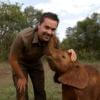






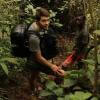


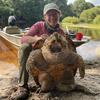


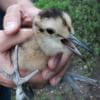



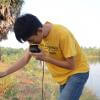




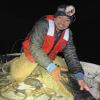



23 April 2025 8:08pm
Thank you Phil,
That sounds as if it might work (but probably with a turn trigger of around 45 degrees), and the baboon collar is well within the weight limit. Where can I find more details about the collar?
Peter